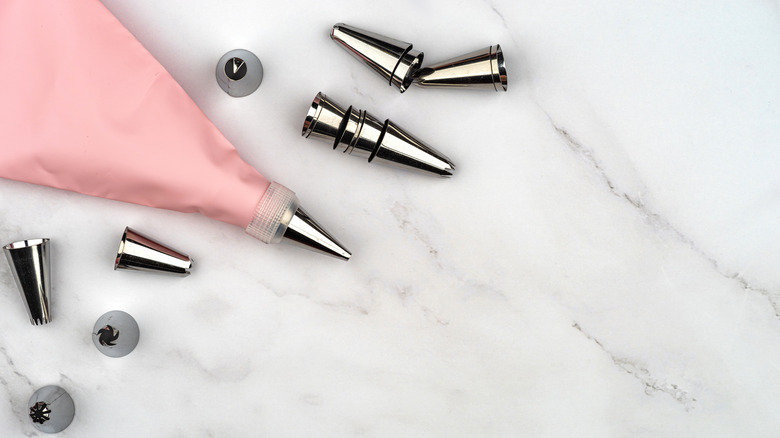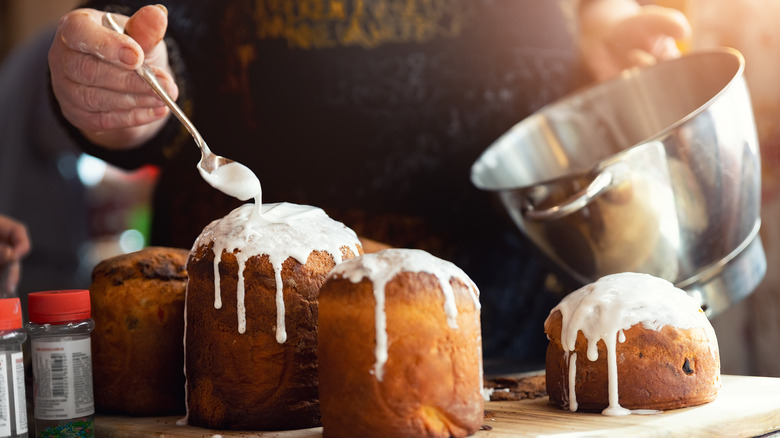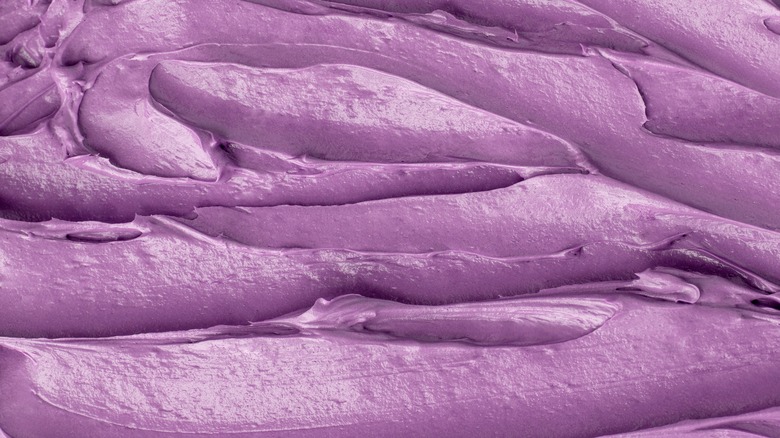Icing Vs. Frosting: What's The Difference?
Though icing and frosting are terms often used interchangeably, these delicious sugary decorations are, in fact, not the same. As Diffen points out, icing and frosting recipes require different ingredients, are used on different types of baked goods, and have very different consistencies. While we know you may not want to correct the family member who regularly mistakes frosting for icing, we're here to help you differentiate the two in your own kitchen.
The next time you are ready to decorate a festive holiday cookie, coat freshly-baked pastries, or add colorful layers to a colorful birthday cake, you'll have the knowledge you need to determine which recipe will result in the most attractive, satisfying treat. Instead of trying to hunt down one all-inclusive recipe for batter and frosting, you'll be able to experiment with your bakery decorating confidently. Don't worry, we have the sugary spreads on lock, so you will, too.
What is Icing?
Icing is made by mixing powdered sugar and some sort of liquid — water, juice, or milk — to produce a smooth, glossy coating of sugar that is perfect for decorating (per The Pioneer Woman). Royal icing, for example, can be found on gingerbread houses and sugar cookies; the sugary spread dries hard but can be stored in sealed containers for up to six months when made in advance (via Wilton).
Icing is forgiving. If your icing is too runny, simply compensate with an extra portion of powdered sugar until you've reached the desired consistency for your decorating needs. Not only can icing be drizzled on top of pastries and bread, but thicker varieties can coat and outline cookies. And, of course, with a sticky surface to work with, you can easily add sprinkles before the icing sets for an added decorative touch.
What is Frosting?
Frosting is made by whipping ingredients into a thick, fluffy spread that is ideal for decorating fluffy cupcakes and cakes for all occasions (via All Recipes). The uniting element of all frosting recipes is the fat (butter, shortening, or cream) that adds structure to frosting and results in the soft, creamy textures destined for Instagram feeds. You'll notice there are many frosting recipes, but some of the most popular include buttercream, cream cheese, Swiss, and Italian meringue (per Martha Stewart). Unlike icing, however, frosting can't be made too far in advance, so you'll need to schedule culinary attempts accordingly.
Whether you want to decorate mini layer cakes or top an irresistible death by chocolate cake, unique flavors and colors can be added to basic frosting recipes. Frosting can also add layers of sweetness between carefully-assembled pieces of cake, and with a little advance planning, your frosting experience can even be mess-free.


